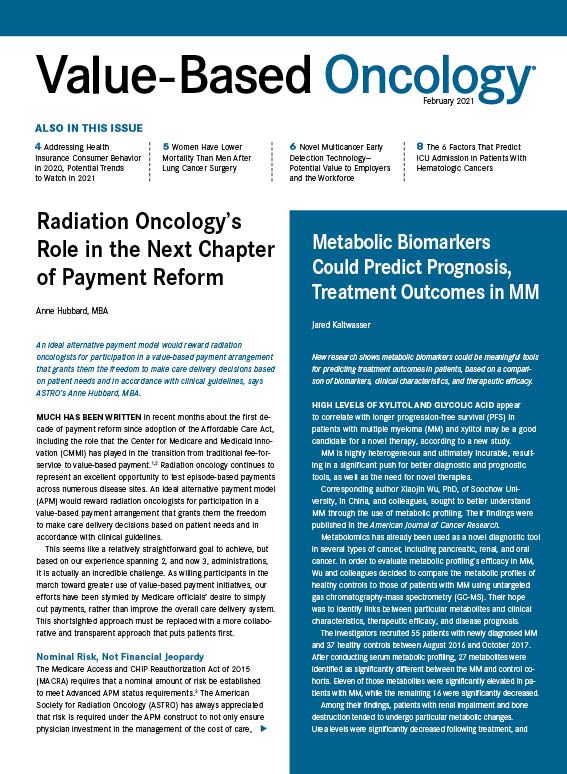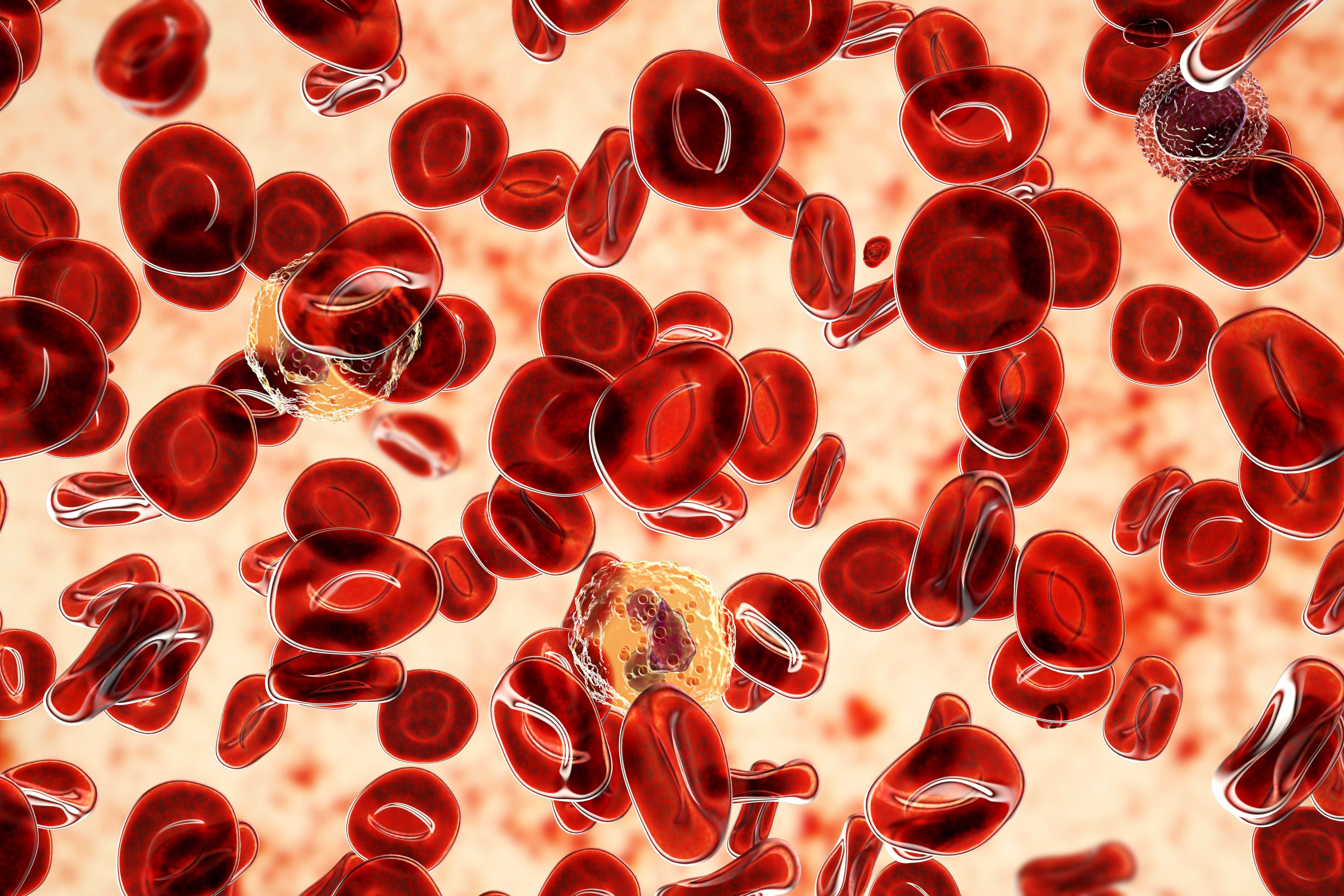Publication
Article
Value-Based Oncology®
Metabolic Biomarkers Could Predict Prognosis, Treatment Outcomes in MM
Author(s):
New research shows metabolic biomarkers could be meaningful tools for predicting treatment outcomes in patients, based on a comparison of biomarkers, clinical characteristics, and therapeutic efficacy.
High levels of xylitol and glycolic acid appear to correlate with longer progression-free survival (PFS) in patients with multiple myeloma (MM) and xylitol may be a good candidate for a novel therapy, according to a new study.
MM is highly heterogeneous and ultimately incurable, resulting in a significant push for better diagnostic and prognostic tools, as well as the need for novel therapies.
Corresponding author Xiaojin Wu, PhD, of Soochow University, in China, and colleagues, sought to better understand MM through the use of metabolic profiling. Their findings were published in the American Journal of Cancer Research.
Metabolomics has already been used as a novel diagnostic tool in several types of cancer, including pancreatic, renal, and oral cancer. In order to evaluate metabolic profiling’s efficacy in MM, Wu and colleagues decided to compare the metabolic profiles of healthy controls to those of patients with MM using untargeted gas chromatography-mass spectrometry (GC-MS). Their hope was to identify links between particular metabolites and clinical characteristics, therapeutic efficacy, and disease prognosis.
The investigators recruited 55 patients with newly diagnosed MM and 37 healthy controls between August 2016 and October 2017. After conducting serum metabolic profiling, 27 metabolites were identified as significantly different between the MM and control cohorts. Eleven of those metabolites were significantly elevated in patients with MM, while the remaining 16 were significantly decreased.
Among their findings, patients with renal impairment and bone destruction tended to undergo particular metabolic changes. Urea levels were significantly decreased following treatment, and post-treatment hypotaurine increases correlated with a positive response to therapy.
“Levels of hypotaurine were decreased at diagnosis in MM patients,” Wu and colleagues wrote. “After treatment, levels of hypotaurine increased significantly in patients with good outcomes, but was still very low in patients with ineffective treatment, which suggests that low levels of hypotaurine may have a certain relationship with the occurrence of MM.”
However, multivariate analysis identified high cysteine and high hypotaurine prior to therapy as independent risk factors for poor treatment outcomes.
Conversely, high levels of glycolic acid and xylitol were found to correlate with a lower risk of disease progression.
In the case of glycolic acid, the authors noted that it is a known inhibitor of tyrosinase, and that Janus kinases 1 and 2 overexpression has been linked with MM. Preclinical studies of JAK inhibitors have shown promise against MM, they noted, a fact that appears to mesh with the current study’s finding that glycolic acid levels correlate with PFS.
“Whether the increased levels of glycolic acid are related to JAK signaling pathway and the prognosis of multiple myeloma patients is not clear, and needs to be investigated further,” they said.
Xylitol is less well studied when it comes to its effect on cancer cells, though Wu and colleagues noted that high concentrations of xylitol are required to inhibit the growth of normal cells, which they said suggests it is more cytotoxic for cancer cells.
“More studies confirmed the inhibitory effect of xylitol with a variety of cell lines,” they wrote. “Moreover xylitol induced cell morphological changes and autophagy in lung cancer cells.”
The authors said xylitol could warrant further study as a therapeutic target in MM.
Reference
Zhao R, Xie Y, Yang B, et al. Identification of metabolic biomarkers to predict treatment outcome and disease progression in multiple myeloma. Am J Cancer Res. 2020;10(11):3935-3946. Published online November 1, 2020.





